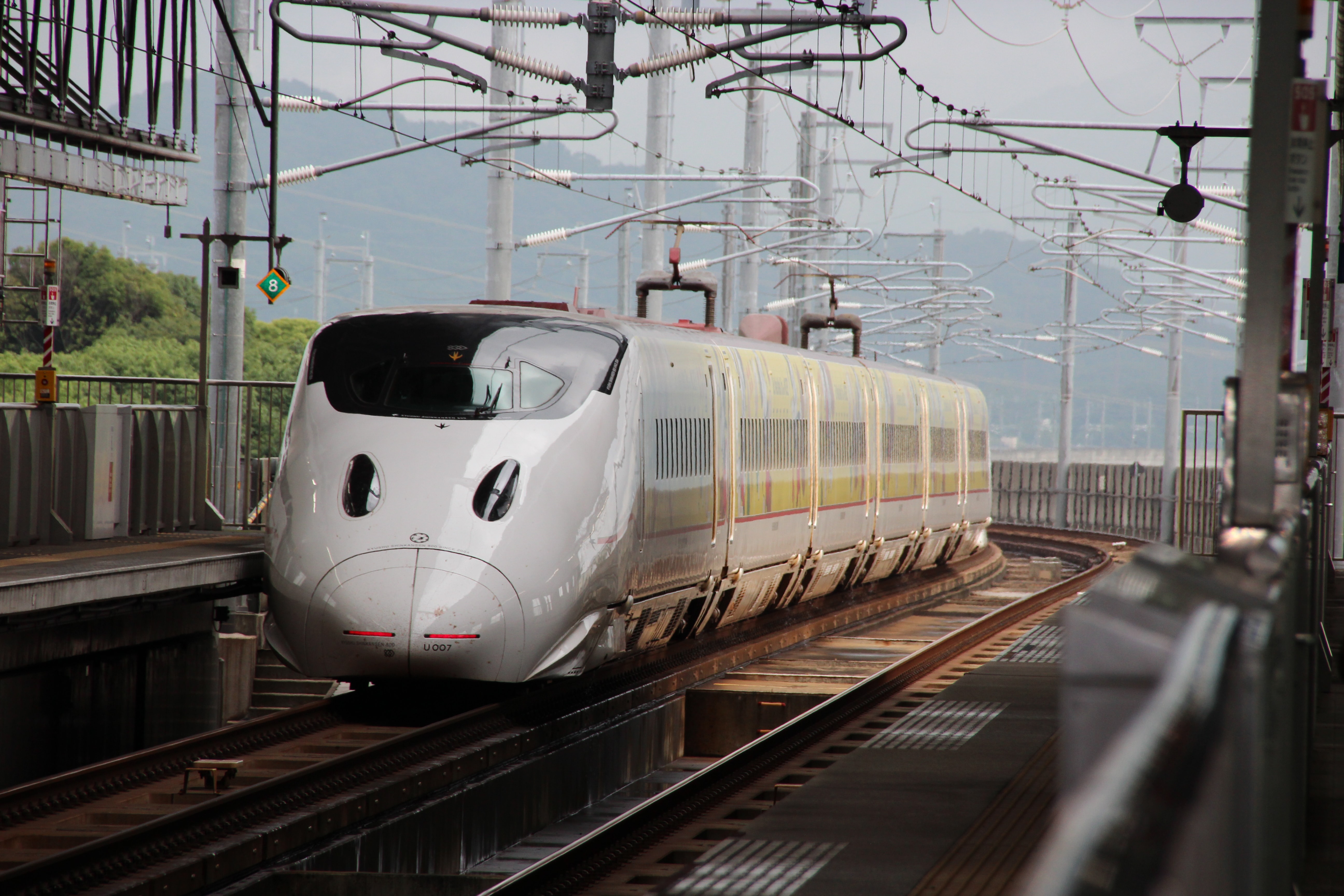High-speed trains in Asia
In my previous article I discussed how high-speed trains have transformed transport networks in Europe. In today’s article I will discuss how they came about and how they have made a big change in other places around the world and specifically in Asia.

High-speed trains in Asia
In my previous article I discussed how high-speed trains have transformed transport networks in Europe. In today’s article I will discuss how they came about and how they have made a big change in other places around the world and specifically in Asia.
Birthplace of the high-speed trains: Japan
The first high speed train (HST) that launched in Japan in 1964, knows as “Shinkansen” or bullet train. The Tōkaidō Shinkansen linking Tokyo with Osaka became very popular and was further expanded in the following years with more improvements implemented to accommodate sound-reducing barriers along certain routes to gouge grievances of residents. The Shinkansen trains have been a huge success in Japan, where in 1967 it had transported 100million passengers, by 1976 1 billion and by 1992 it was averaging 23,000 passengers per hour per direction, thus becoming the busiest train network in the world. Not only that but the shinkansen trains is known for its’ timeliness and efficiency with average delays around 36 seconds. The fastest line in Japan is the Nozomi and it covers the Shin-Osaka to Hakata route, reaching speeds of up 300km/h.
Currently, there are also plans to enhance the high-speed network with the next generation of maglev trains, which levitate and utilize the power of magnets, which would allow them to reach even higher speeds due to less friction being caused. The line is to cover 290km linking Tokyo with Nagoya and once operational could reach speeds of up to 500km/h thus cutting the current journey from 1h and 30min to 40min. However, currently the project is being delayed due to increased costs, which have reached around 64 bn USD.
High-Speed trains in China
China has become one of the countries with the largest high-speed railway network in the world in the span of just 30 years. The first high-speed train in China launched in 2008 with trains capable of speeds between 250 to 350km/h. The average cost has been between 17-21 million USD per km around one third cheaper compared to other countries.
Currently, there are 37,900km of lines crossing the country, linking China’s megacities. This has enabled the country to link 75% of its’ cities that have a population of over 500,000 by 2020. What makes China’s success even more staggering is the network traverses many different types of terrain from mountains to rivers, to even deserts. The achievements do not stop there, China has even launched autonomous trains between Beijing and Zhangjakou and was built just in time for the Beijing 2022 Winter Olympics. Also, a new train that uses maglev technology was debuted in 2021 in the city of Qingdao capable of reaching speeds of 600km/h.
High-speed trains in South Korea
South Korea is another country that has made great strides in developing a high-speed railway network. The first big project cost around 16 billion USD and it was the largest linking Seoul with Busan. The project was built by utilizing French technology and comprised of 46 TGV trains capable of reaching speeds of 300km/hour. Not only that but the country is developing their own brand of trains called KXT-Eum, which can reach speeds of 260km/h. Since its’ launch in January 2021 the service had been used by 320,000 people by May 2021, or 2800 people a day.
In conclusion
High-speed trains have played a vital role in many countries across the globe. This is especially, evident in countries with a high density of large cities, where the HST network offers better access, connectivity, speed, reliability, and usage to consumers.
Furthermore, HST offers a viable alternative to air travel with reduced emissions and better linkage to city centers. As shown in the first example that was done by Japan, which was the first country to introduce the service in 20th century, it has grown in popularity in the 21st century. There are many upcoming projects in several countries and hopefully the lessons learned as to how to create and operate such an advanced network would be utilized to the best of their capacity and capabilities.
Sources Used(not an exhaustive list):
Fact Sheet | High Speed Rail Development Worldwide | White Papers | EESI
The Shinkansen Turns 50: The History and Future of Japan’s High-Speed Train | Nippon.com
History of the Shinkansen: The Japanese Bullet Trains - JRailPass
Chuo maglev costs soar - International Railway Journal
Cost of High Speed Rail in China One Third Lower than in Other Countries
India's first high-speed railway hit with $4.5bn cost hike - Global Construction Review
Central Japan Railway: cost of Nagoya maglev line has risen $14bn - Global Construction Review
Shinkansen high-speed train network in Japan – Japan Station
Amazing technology behind China's high speed trains - CGTN
How China's high-speed rail network got built so fast | CNN Travel
high-speed-railway.jpg (JPEG Image, 4500 × 3600 pixels) — Scaled (25%)
High-speed rail in China: Should the world be following its example?
China debuts world's fastest Maglev train | CNN Travel
China unveils 600 kph maglev train - state media | Reuters
KTX Train Tickets | Korea Rail | High-Speed Trains
Korea Speed Rail - Reduce Travel Time150% - Bechtel
South Korea: Korail launches new KTX-Eum high-speed train | UIC Communications
Slow progress for India's high-speed rail revolution | CNN Travel
Train travel in Uzbekistan | Train times, fares, how to buy tickets
Uzbekistan's high-speed railways linking the past with the future
A bullet train journey across Uzbekistan | The Independent | The Independent
Shinkansen Route Map | Nippon.com
KTX High Speed Train | Map - KTX TRAINS
Photo by Fikri Rasyid on Unsplash
Photo by Rikku Sama on Unsplash
https://www.youtube.com/watch?v=9wJCltuawSs



